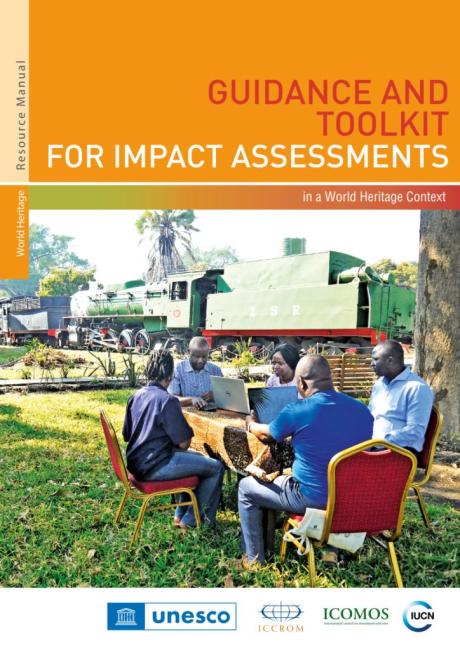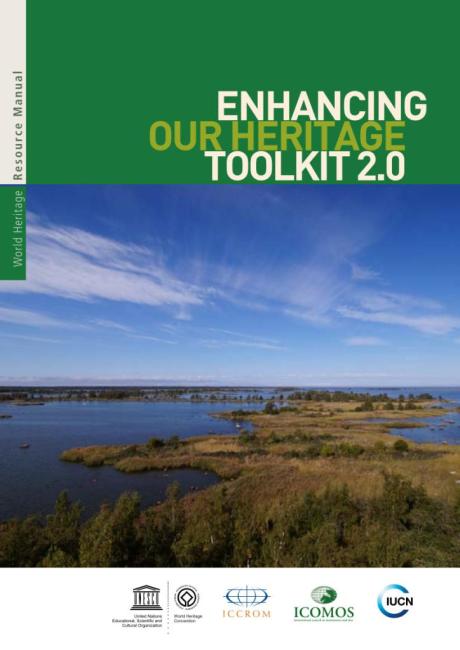Implementing management measures
- The effectiveness of any management plan must be evaluated on its content and the extent to which it is implemented and desired outcomes achieved.
- Implementation comprises two parallel functions: executing the actions planned, and regular monitoring to track progress and make adjustments.
- Monitoring how a management plan is being implemented helps to check whether work is being carried out as specified in the programme of actions and any related work plan.
Implementation is about ensuring planned actions take place. The effectiveness of any management plan is based not only on its existence and content but also the extent to which it is implemented to produce outputs and achieve desired management outcomes. As a lot of effort and resources are directed to preparing management plans and other planning instruments, it is assumed that implementation will naturally follow but this is not always the case. There can be many reasons why plans are never implemented, such as poorly formulated actions, insufficient resources, inadequate consultation and empowerment leading to weak buy-in, or lack of institutional and political commitment. Good practice requires that implementation includes two parallel functions: executing the actions planned and regular monitoring to track progress and make adjustments, if needed.
In order to support effective implementation, there are a number of issues that can be addressed during the planning process to ensure the management plan is a useful tool for protecting and conserving the heritage place:
- The commitment of all managers and relevant actors for implementing the plan can be better ensured if they have been involved in its development. Therefore, implementation is dependent on having previously undertaken a participatory planning process.
- A concise management plan is more likely to be implemented. This means that the plan should mainly contain information required for planning, and implementation processes. Descriptive information about the heritage place and supporting information that is crucial for developing the plan, can be provided in references or annexes.
- A plan needs to indicate who has responsibility to do what, particularly when implementation is dependent on multiple managers.
- Clear priorities can lead to the programme of actions established in a logical sequence that ensures effective use of available resources. Such a sequence of work should be respected when implementing the programme of actions and the resources which need to be available at the time of implementation.
- A plan should have a precise timeframe so that it is clear when implementation is supposed to start and end, with precise dates for when planned actions are to be carried out.
- The implementation of actions will necessarily involve multiple steps of setting up administrative processes and gaining approval. The timeframe for implementation should take into consideration the time needed for approval, so that the programme of actions remains relevant even if it has been necessary to wait for lengthy administrative processes to take place.
- Documenting the implementation of the project, who has been involved and its achieved outcomes, in a periodic manner, is essential for monitoring and evaluating the plan.
- Heritage All inherited assets which people value for reasons beyond mere utility. Heritage is a broad concept and includes shared legacies from the natural environment, the creations of humans and the creations and interactions between humans and nature. It encompasses built, terrestrial, freshwater and marine environments, landscapes and seascapes, biodiversity, geodiversity, collections, cultural practices, knowledge, living experiences, etc. places can be complex and there can be many aspects that make it challenging to track implementation, unless agreed mechanisms are in place to ensure that actions are completed. Therefore it is helpful to give one manager responsibility for monitoring the implementation of the management plan and other subsidiary plans.
Many heritage places have other thematic or subsidiary plans that address many other processes that also contribute to maintaining the values of a heritage place, such as providing tourism and visitor services, mitigating and adapting to climate hazards and reducing disaster risks, assessing impacts from development and change, carrying out research, fostering the engagement of local communities or facilitating educational activities. (DRM plan see 5.6, Climate Change 5.7, impact assessment see 5.8, tourism strategy and heritage interpretation plan see 5.9). It is very important that any subsidiary or complementary plans and processes are carefully integrated within the management plan with the fundamental objectives of sustaining the OUV and other heritage values and aligned in terms of timeframes and implementation.
- Is it clear who is responsible for the implementation of the management plan?
- Are the details of implementation being adequately documented?
- Are the necessary resources available for implementing the plan?
- Are all managers committed to implementing the actions included in the management plan?
- Do planning instruments (e.g. management plan and work plans) include a logical and clear understanding of inputs, actions or activities, outputs and outcomes – and the links between them?
- If not, what aspects are missing? For instance, are annual (or multi-year) work plans organized by actions only, without a clear link to the outputs and outcomes those actions are intended to produce or deliver?
- Have desired management outcomes been identified as part of the planning processes?
- Have desired outcomes been defined in relation to the management objectives as well as the factors affecting the property?
- Where outputs have been identified, are they well defined and aligned with the management objectives and other desired outcomes for the
World Heritage property
A cultural, natural or mixed heritage place inscribed on the World Heritage List and therefore considered to be of OUV for humanity. The responsibility for nominating a property to the World Heritage List falls upon the State(s) Party(ies) where it is located. The World Heritage Committee decides whether a property should be inscribed on the World Heritage List, taking into account the technical recommendations of the Advisory Bodies following rigorous evaluation processes.
When used as a general term, World Heritage refers to all the natural, cultural and mixed properties inscribed on the World Heritage List. ? - Do the outputs selected for monitoring collectively provide a good understanding of the productivity of the management system, or are they limited to those that are the easiest to measure?
- Do the identified indicators enable the tracking of management productivity over time?



